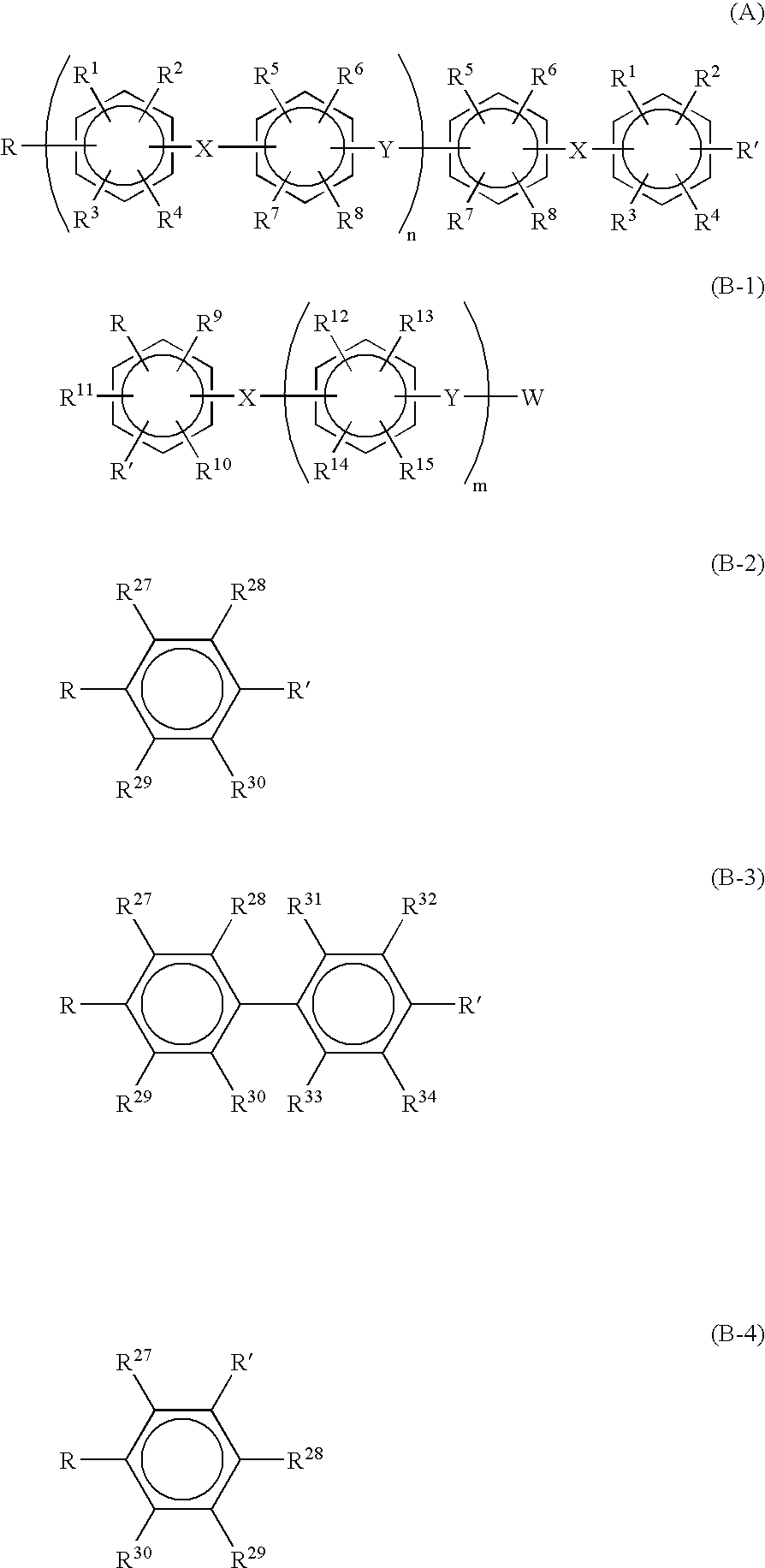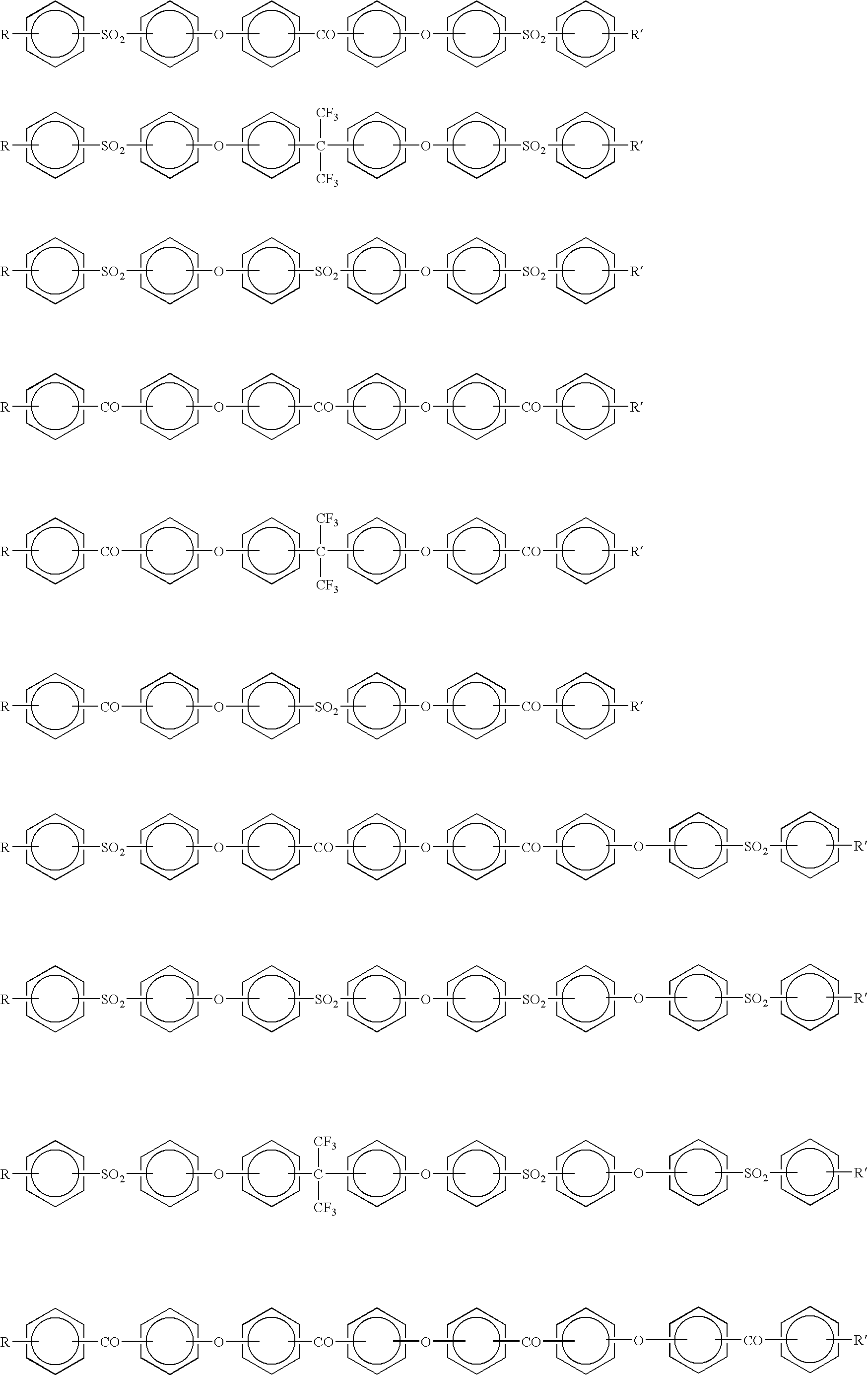Manufacturing process for membrane-electrode assemblies
a manufacturing process and technology for membrane electrodes, applied in the direction of sustainable manufacturing/processing, final product manufacturing, contraceptive devices, etc., can solve the problems of poor interlaminar bond strength of mea and deterioration of metallic catalysts, and achieve the effect of sufficient bond strength
- Summary
- Abstract
- Description
- Claims
- Application Information
AI Technical Summary
Benefits of technology
Problems solved by technology
Method used
Image
Examples
production example
[0132] [Synthesis of Sulfonated Polyarylene]
[0133] (Preparation of Oligomer)
[0134] A 1-liter, three-necked flask equipped with a stirrer, a thermometer, a condenser tube, a Dean-Stark tube and a three-way nitrogen inlet cock was charged with:
[0135] 67.3 g (0.20 mol) of 2,2-bis(4-hydroxyphenyl)-1,1,1,3,3,3-hexafluor-opropane (bisphenol AF),
[0136] 60.3 g (0.24 mol) of 4,4'-dichlorobenzophenone (4,4'-DCBP),
[0137] 71.9 g (0.52 mol) of potassium carbonate,
[0138] 300 ml of N,N-dimethylacetamide (DMAc), and
[0139] 150 ml of toluene.
[0140] The flask was placed in an oil bath, and the contents were heated at 130.degree. C. with stirring in a nitrogen atmosphere. Water yielded during the reaction was allowed to form an azeotropic mixture with toluene and removed outside the system through the Dean-Stark tube. The generation of water almost ceased in about 3 hours. Then the reaction temperature was raised gradually from 130.degree. C. to 150.degree. C., during which most of the toluene was remo...
example 1
[0155] The sulfonated polyarylene copolymer was dissolved in a mixed solvent consisting of NMP and methanol (1 / 1 weight ratio) with 15 wt % copolymer concentration. The solution was flow cast on a PET film and dried for 1 hour in a 120.degree. C. oven with internal air circulation to give a membrane having a thickness of 40 .mu.m. Twenty A4 specimens cut from the membrane were soaked in 100 liters of distilled water over a period of 48 hours, and were dried for 1 hour in a 80.degree. C. oven with internal air circulation. Thus, proton conductive membranes having a residual NMP amount of 0.5 part by weight were obtained.
[0156] Each proton conductive membrane was sandwiched between catalyzed electrode substrates, in which NMP had been sprayed on catalyst / carbon surfaces (EC-20-20-10 available from TOYO TECHNICA INC., catalyst amount=1 mg / cm.sup.2, 20 wt % platinum supported on Vulcan XC-72), so that both the catalyst / carbon surfaces would contact with the proton conductive membrane. T...
example 2
[0158] MEA was manufactured by the procedure illustrated in Example i except that the catalyst / carbon surfaces were coated with N,N-dimethylacetamide (DMAC) in place of NMP. This MEA was placed in a thermo-hygrostat under the conditions of 85.degree. C. and 90% RH similar to those in practical working conditions for fuel cells. No defects were caused in the interfaces between the proton conductive membrane and the catalyzed electrode substrate in the following 5000 hours.
PUM
| Property | Measurement | Unit |
|---|---|---|
| Percent by mass | aaaaa | aaaaa |
| Percent by mass | aaaaa | aaaaa |
| Pressure | aaaaa | aaaaa |
Abstract
Description
Claims
Application Information
 Login to View More
Login to View More - R&D
- Intellectual Property
- Life Sciences
- Materials
- Tech Scout
- Unparalleled Data Quality
- Higher Quality Content
- 60% Fewer Hallucinations
Browse by: Latest US Patents, China's latest patents, Technical Efficacy Thesaurus, Application Domain, Technology Topic, Popular Technical Reports.
© 2025 PatSnap. All rights reserved.Legal|Privacy policy|Modern Slavery Act Transparency Statement|Sitemap|About US| Contact US: help@patsnap.com



